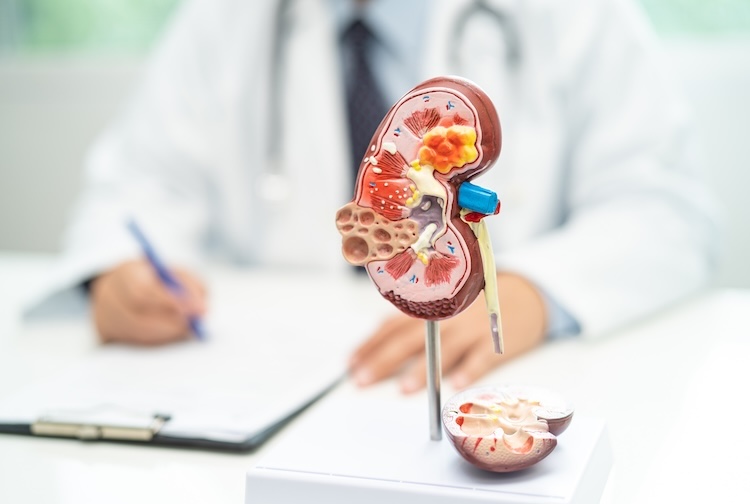What are the benefits of a preemptive kidney transplant?
VCU Health Hume-Lee Transplant Center experts answer common questions about kidney disease and preemptive transplants.
June 24, 2025 According to the National Kidney Foundation, it can take 2 to 5 years or more for a patient to be matched with a deceased organ donor. (Getty Images)
According to the National Kidney Foundation, it can take 2 to 5 years or more for a patient to be matched with a deceased organ donor. (Getty Images)
By Caroline Ward
Kidney disease is a growing public health issue, and the need for transplant continues to rise. Currently, more than 85% of people on the national transplant waitlist specifically need a kidney transplant.
As medical professionals strive to improve both outcomes and quality of life for patients with end-stage kidney disease, one option to consider is preemptive kidney transplant — receiving a kidney transplant before ever needing dialysis.
While some studies have suggested the benefits may be modest, in our experience at VCU Health Hume-Lee Transplant Center, we have seen positive outcomes for patients who receive a kidney transplant preemptively.
“The goal is to stay ahead of kidney failure, not just react to it,” said Gaurav Gupta, M.D., co-medical director of kidney transplantation at Hume-Lee Transplant Center. “Preemptive transplant allows us to give patients a stronger, healthier future.”
We sat down with Gupta and his fellow co-medical director, Dhiren Kumar, M.D., to answer common questions about preemptive kidney transplantation.
What is a preemptive kidney transplant?
A preemptive kidney transplant is when a patient receives a kidney transplant before they need to start dialysis. This approach aims to prevent the complications and health decline often associated with dialysis. Patients are typically referred for evaluation when their kidney function is severely declining, but before reaching end-stage failure that requires dialysis.
Who is a good candidate for a preemptive transplant?
Anyone with advanced chronic kidney disease who is approaching kidney failure may be a candidate. This includes patients with severe kidney disease (whose kidney function is below 20%) who are likely to need dialysis soon. Patients with known causes of kidney disease, like polycystic kidney disease or diabetes, may be monitored closely and referred early. If the need for dialysis is looming, that’s a critical moment to explore transplant options.
What complications could occur because of prolonged kidney dialysis?
Long-term dialysis can really take a toll on the body. It can lead to a decreased quality of life due to frequent treatments and fatigue, which can significantly limit daily activities.
The survival outcomes are worse, as well. According to the National Kidney Foundation, many patients on dialysis have a 5-year survival rate of less than 50%, compared to more than 80% for those who receive a transplant. There is also a risk of medical complications including heart disease, infections and vascular issues. Over time, dialysis can weaken patients to the point where they’re no longer good candidates for transplant.
“When we can avoid dialysis entirely, we’re not just adding potential years to someone’s life — we’re adding quality to those years,” Kumar added.
So, receiving dialysis might make it hard to get a kidney transplant in the long run?
Unfortunately, this is correct. The longer a person is on dialysis, the higher their risk of complications, which can make transplants more difficult or even unsafe. Some patients become too medically frail. That’s why it’s so important to explore transplant — and especially preemptive transplant — before dialysis becomes necessary.
How can someone get a preemptive transplant if the wait for a deceased donor kidney is so long?
Preemptive transplant from a deceased donor is possible, but less common due to long wait times. The most reliable way to receive a preemptive transplant is through living kidney donation. A friend, family member or even an altruistic donor can help shorten the timeline, so you will avoid dialysis altogether. Our team at Hume-Lee Transplant Center can guide patients and families through that process.
“Living donation is a game changer,” Kumar said. "It not only shortens the wait, it also gives us an even better shot at long-term success.”
What are the benefits of receiving a kidney from a living donor?
A kidney from a living donor is the best type of organ for transplantation. For starters, they last on average 15 to 20 years compared to 10 to 15 years from deceased donors. They begin working right away, which reduces recovery time and complications. Living donor kidney transplants can be scheduled, meaning less time in limbo, a smoother surgical process and no need for emergency dialysis.
Living donation is not only more predictable — it also leads to better overall outcomes for the recipient.
When should I start talking to my doctor about preemptive transplant and living donation?
As soon as your doctor tells you your kidney function is worsening, it’s time to start the conversation. Early planning gives you the most options, so be sure to advocate for your health and ask questions. Even if you’re not ready for a transplant yet, our transplant team can evaluate you, help identify potential living donors and begin supporting you through this journey.
Hume-Lee also closely collaborates with rehabilitation facilities as well as other parts of VCU Health and Virginia Commonwealth University’s health science schools to help patients prepare for transplantation. For example, we work with VCU’s Department of Kinesiology and Health Sciences to offer a dedicated Renal Rehab clinic. This program supports patients with underlying health conditions such as obesity, diabetes or heart issues which might need to be addressed before surgery. That way, when the time comes, you’re in the best possible shape to receive a successful kidney transplant.
“It’s never too early to start the transplant conversation,” Gupta said. “Early referral can open doors to options patients didn’t even know were possible.”
Looking for more information about living kidney donation? Read this Q&A.




.jpg)